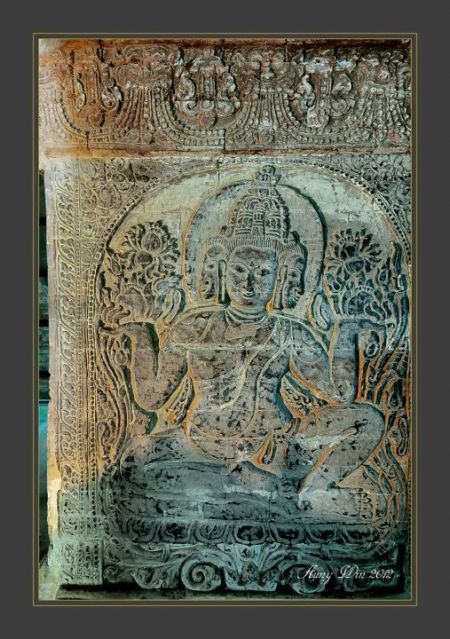I have the opportunity to see the movie Naresuan again and also the 2nd episode. This time the subtitle is in Myanmar so I understand more. I have read about King Naresuan, first from Myanmar history articles and then from the Glass Palace Chronicle. Later, during my visit to Thailand I got to many places associated with King Naresuan at Mae Sai, Phitsanulok and Ayutthaya. When I posted my Thailand visit photos, I read much about King Naresuan and the Myanmar Thai wars from the many Thai travel sites and Wikipedia on the web. The first time I watched the movie Naresuan was before my visit to Thailand. This second view of the film Naresuan is with a better understanding of Thai history and first hand knowledge of the historical places at Phitsanulok and Ayutthaya.
The movie series is in 3 parts. The films were made in a grand scale, and included much about King Bayint Naung and King Nanda with scenes of Hantharwaddy too (in studio of course) and the Hantharwaddy Thai wars.
What I noticed about the film is the presence of several Westerners in the list of those who made the movies and the similarity of the films to other war epics of the West and also similarity to the movie The Last Samurai in that it is under Western influence and that the local culture is lost. Similarly, Ang Lee’s Memoirs of a Geisha looks like a Chinese movie, not a Japanese one. I feel that the film Naresuan would be better if an all Thai production crew had made the film.
With that in mind, I am not surprised at the cultural and other errors which I noticed in the film regarding Myanmar. I cannot be sure if there are errors about Thai side, but believe there might be, as I know of some facts different from what I have been told by Thais and I have to write about the movie Naresuan which is presented from the Thai Western view and also about what has being recorded about the events in Myanmar history, from a Myanmar point of view.
One fact which I noticed is that a Siam Buddhist monk in Hantharwaddy taught prince Naresuan martial arts in Hantharwaddy! This is contrary to my knowledge about Myanmar culture and Theravada Buddhism. Ari monks in early Bagan period till king Anawratha’s time in the 11th century A.D. practiced wrestling but I have not read about other martial arts being practiced by the Aris. After Theravada Buddhism was introduced, even wrestling was not practiced by monks in Myanmar. Even if Siam Buddhist monks practice martial arts, it is unlikely that they understand war strategy.
I remember a film made by Japanese about Myanmar_in it was portrayed a Myanmar monk playing a Myanmar harp / saung. It might be true of Japanese monks to play music (I do not know for sure) but music is definitely off limits to Myanmar monks and even to laymen who take the 8 percepts of sabath. In that Japanese movie about Myanmar, the Myanmar cast could not correct the wrong concept of the Japanese director and I feel that the Thai cast also could not correct this wrong idea (or maybe Thai monks actually practice and teach martial arts like the Shaolin monks).
It is written in Wikipedia that: Naret, along with other captive princes from other kingdoms, were educated in martial arts and war strategy of Burmese and Portuguese style.
Myanmar history mentioned that prince BhyaNarit / Naret was allowed military studies together with Myanmar princes, and that would be in court under generals and other military teachers, not monks, who traditionally teach only Buddhism, literature and etiquette to the royalty.
When I was in Thailand and noticed the many rooster statutes not only at Thai homes but also at king Naresuan monument in Phitsanulok (and later in Ayutthaya too) I asked the tuk-tuk-man about them and was told that king Naresuan liked cock fighting and that his fighting cocks were brought from Hantharwaddy! In the movie, it was portrayed that the untrained Siam fighting cock in Hantharwaddy, called captive cock because it was brought along by Thai captives, was superior to trained Myanmar fighting cocks, including that of prince San Kay of Hantharwaddy.
Another fact I noticed in the film is the armour of Myanmar and Thai kings and generals. I am not sure about Thai armour but armour wearing is not practiced by Myanmar troops both Bamar and Mon although Portugese mercernaries in the Hantharwaddy and Ayutthaya armies would wear them.
One helmet worn by an Ayutthaya general very much resembles that of the Samurai armour helmet. The use of identification flag behind the courier on horseback also resembles those in Japanese movies.
The movie mentioned about the battle near Thaton river and I was surprised as there is not one nearby. It must have been the Thanlwin / Salween river which is the biggest one on the route, or maybe the Sittaung river, the next largest.

